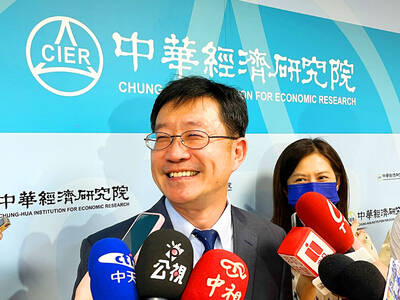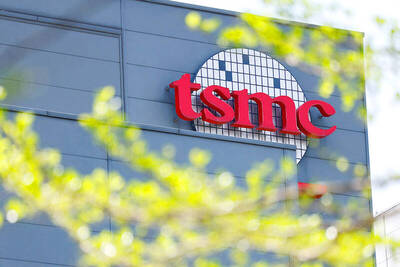The government has cut the feed-in tariffs to be paid to generators of solar power next year because of the decreasing costs of manufacturing solar panel modules, the Bureau of Energy said on Wednesday.
The feed-in tariffs (FITs) are the wholesale prices that state-run utility Taiwan Power Co (Taipower, 台電) pays generators of solar power.
The bureau said the government would cut the tariffs by between 9.23 percent and 11.88 percent for solar power plants in different capacity categories in the first half of next year, after cuts of between 1.9 percent and 2.56 percent in the second half of this year.
However, the feed-in tariffs for hydropower energy will be increased by 5.79 percent to NT$2.47 per kilowatt-hour, while rates for energy from other renewable energy sources — wind, geothermal and waste materials — will be maintained, the bureau said.
ADJUSTMENTS
Under the latest adjustments, the new tariffs for the first half of next year will be NT$8.4 per kilowatt-hour for rooftop solar energy panel plants with a capacity below 10 kilowatts, NT$7.54 for between 10 kilowatts and 100 kilowatts, NT$7.12 for 100 kilowatts to 500 kilowatts, NT$6.33 for 500 kilowatts and above, and NT$5.98 for ground-based solar panel plants.
The current rates are NT$9.25 per kilowatt-hour for panel plants of up to 10 kilowatts, NT$8.33 for between 10 kilowatts and 100 kilowatts, NT$7.97 for 100 kilowatts to 500 kilowatts, NT$7.19 for 500 kilowatts and above and NT$6.76 for ground-based solar energy panel plants, the bureau’s figures show.
The new tariffs for the first half of next year are still higher than the average cost of NT$2.47 per kilowatt-hour generated by Taipower, Taiwan Cogeneration Corp (台汽電) and independent power producers (IPPs) using fossil fuels such as coal and oil, Tseng Tseng-tsai (曾增材), senior specialist at the bureau’s energy technology division, said at a press conference.
The government expects the production costs of solar energy panels to decline further in the near future, and the rates will be further lowered in the second half of next year to NT$8.18 per kilowatt-hour for rooftop solar power panel plants with an energy capacity below 10 kilowatts, NT$7.23 for those between 10 kilowatts and 100 kilowatts, NT6.9 for 100 kilowatts to 500 kilowatts, NT$5.98 for 500 kilowatts and above, and NT$5.62 for ground-based solar power panel plants, he said.
Meanwhile, the bureau has raised the nation’s solar power capacity target to 130 megawatts for next year, an increase of 30 percent from this year’s 100 megawatts, Tseng said.
INCENTIVES
He said the increase in the capacity target would provide incentives for solar panel and photovoltaic systems makers, creating job opportunities in other industries such as architecture, engineering and steel, and increasing the total solar panel production value from NT$11.6 billion (US$399 million) this year to NT$13.2 billion next year.
“We forecast renewable energy companies will make higher profits next year compared with this year and there will be more firms entering the market,” Tseng said, while expressing the hope that the nation’s photovoltaic exports would increase by 10 percent a year.

WEAKER ACTIVITY: The sharpest deterioration was seen in the electronics and optical components sector, with the production index falling 13.2 points to 44.5 Taiwan’s manufacturing sector last month contracted for a second consecutive month, with the purchasing managers’ index (PMI) slipping to 48, reflecting ongoing caution over trade uncertainties, the Chung-Hua Institution for Economic Research (CIER, 中華經濟研究院) said yesterday. The decline reflects growing caution among companies amid uncertainty surrounding US tariffs, semiconductor duties and automotive import levies, and it is also likely linked to fading front-loading activity, CIER president Lien Hsien-ming (連賢明) said. “Some clients have started shifting orders to Southeast Asian countries where tariff regimes are already clear,” Lien told a news conference. Firms across the supply chain are also lowering stock levels to mitigate

Six Taiwanese companies, including contract chipmaker Taiwan Semiconductor Manufacturing Co (TSMC, 台積電), made the 2025 Fortune Global 500 list of the world’s largest firms by revenue. In a report published by New York-based Fortune magazine on Tuesday, Hon Hai Precision Industry Co (鴻海精密), also known as Foxconn Technology Group (富士康科技集團), ranked highest among Taiwanese firms, placing 28th with revenue of US$213.69 billion. Up 60 spots from last year, TSMC rose to No. 126 with US$90.16 billion in revenue, followed by Quanta Computer Inc (廣達) at 348th, Pegatron Corp (和碩) at 461st, CPC Corp, Taiwan (台灣中油) at 494th and Wistron Corp (緯創) at

NEW PRODUCTS: MediaTek plans to roll out new products this quarter, including a flagship mobile phone chip and a GB10 chip that it is codeveloping with Nvidia Corp MediaTek Inc (聯發科) yesterday projected that revenue this quarter would dip by 7 to 13 percent to between NT$130.1 billion and NT$140 billion (US$4.38 billion and US$4.71 billion), compared with NT$150.37 billion last quarter, which it attributed to subdued front-loading demand and unfavorable foreign exchange rates. The Hsinchu-based chip designer said that the forecast factored in the negative effects of an estimated 6 percent appreciation of the New Taiwan dollar against the greenback. “As some demand has been pulled into the first half of the year and resulted in a different quarterly pattern, we expect the third quarter revenue to decline sequentially,”

NEGOTIATIONS: Semiconductors play an outsized role in Taiwan’s industrial and economic development and are a major driver of the Taiwan-US trade imbalance With US President Donald Trump threatening to impose tariffs on semiconductors, Taiwan is expected to face a significant challenge, as information and communications technology (ICT) products account for more than 70 percent of its exports to the US, Chung-Hua Institution for Economic Research (CIER, 中華經濟研究院) president Lien Hsien-ming (連賢明) said on Friday. Compared with other countries, semiconductors play a disproportionately large role in Taiwan’s industrial and economic development, Lien said. As the sixth-largest contributor to the US trade deficit, Taiwan recorded a US$73.9 billion trade surplus with the US last year — up from US$47.8 billion in 2023 — driven by strong